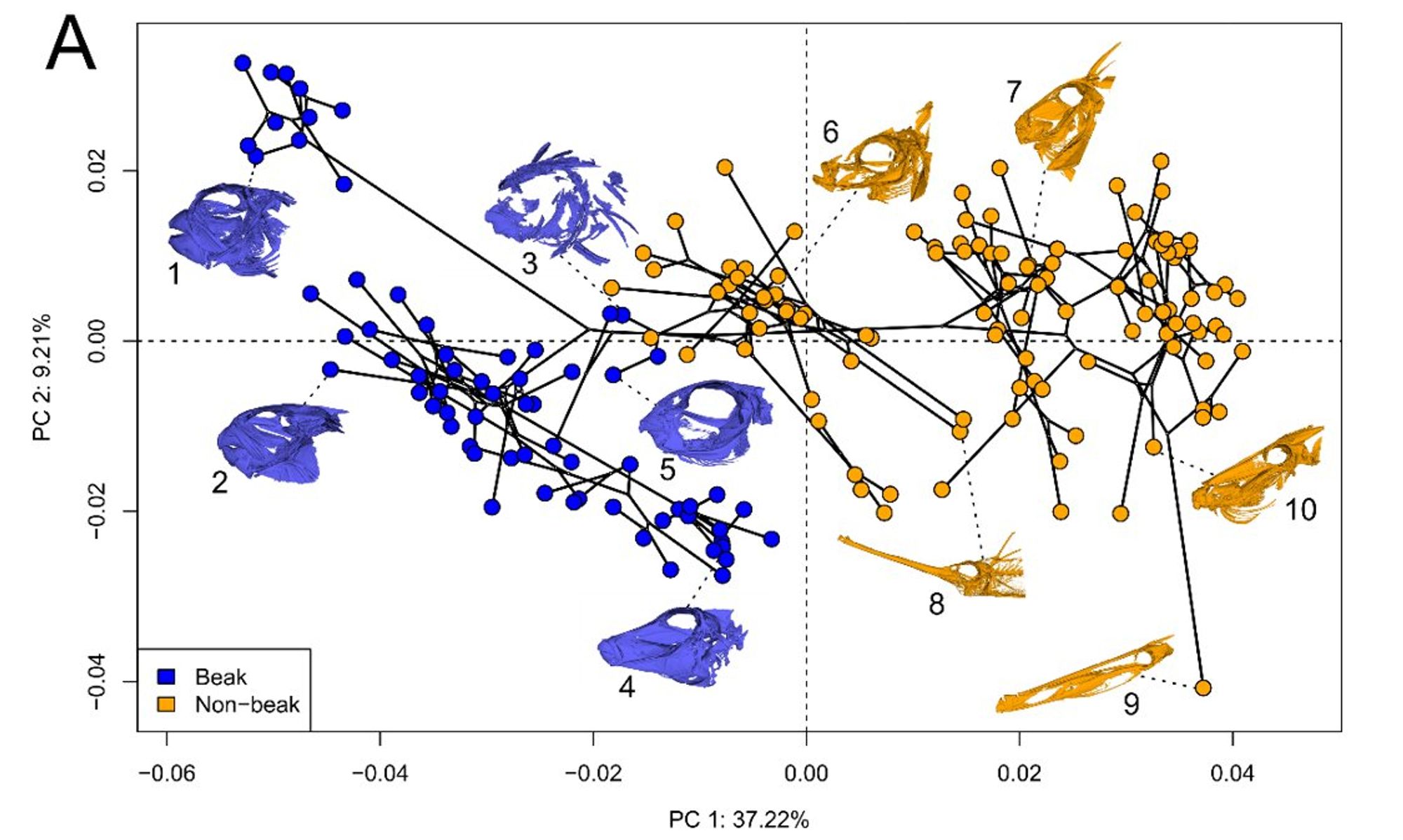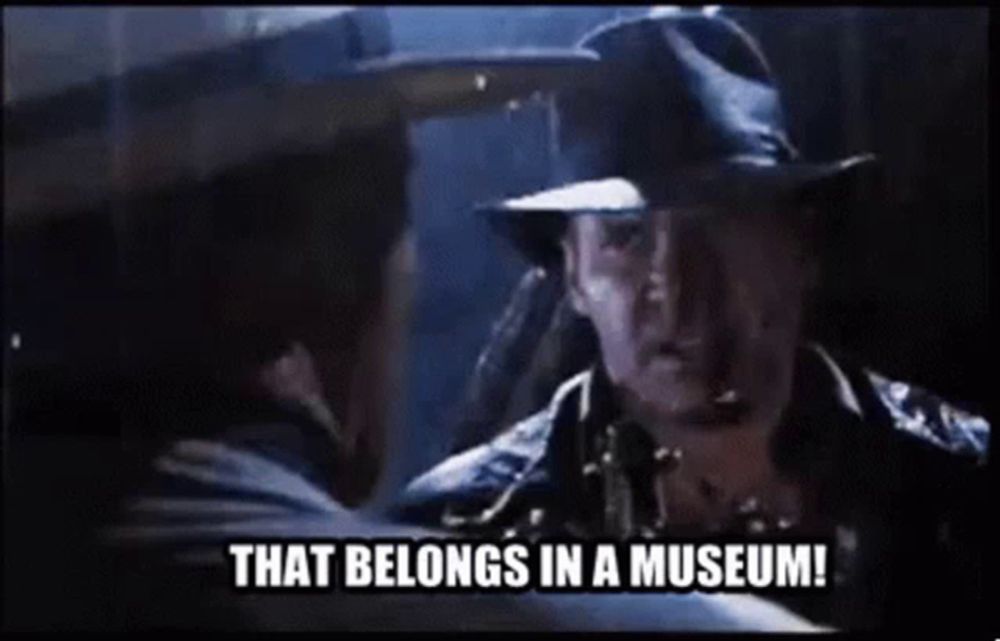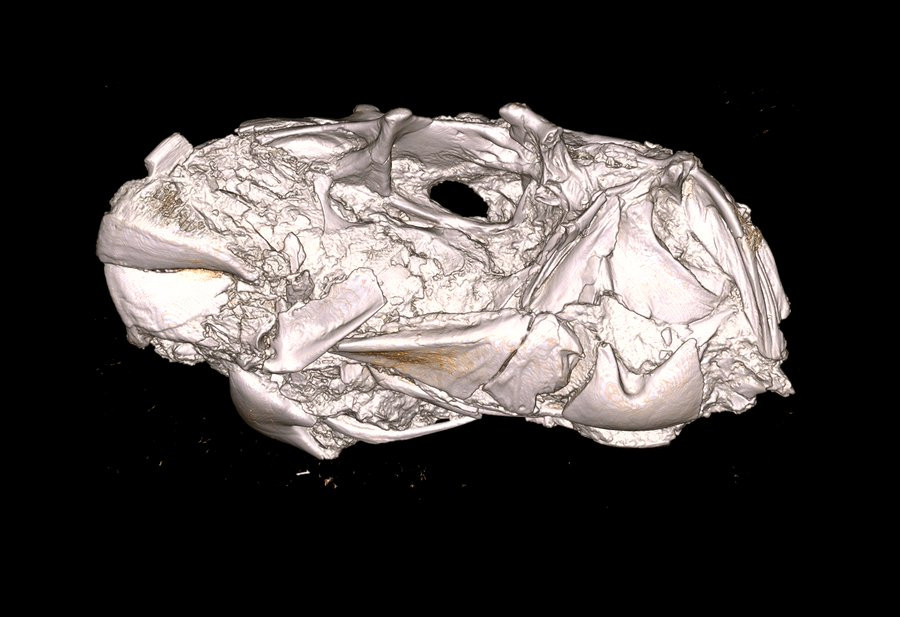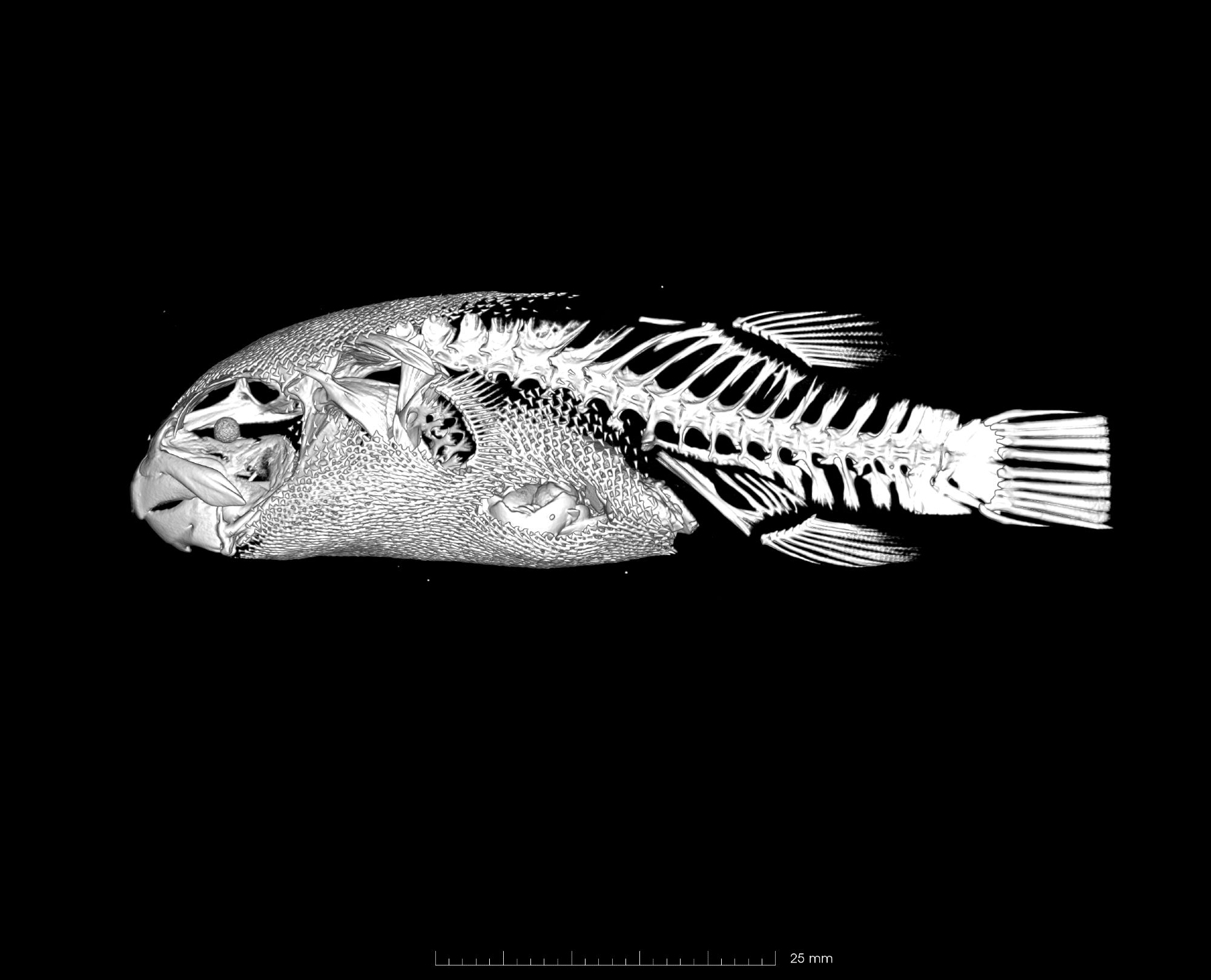
So, beaks seem to have a pretty strong effect on t-form evolution. But what about their habitat? When we look at the effect of coral reef association on skull shape evolution in t-forms, we surprisingly find similar rates of evolution between reef and non-reef habitats. 12/15
Overall, we found no difference in levels of integration between skulls of beaked vs. non-beaked species, but we do find very high rates of evolution in the jaw bones of beaked spp. Jaws in beaked taxa are evolving 2x faster!! 11/15

Across the t-form phylogeny, we see rapid rates of skull shape evolution at the origin of our two beaked clades. Also note the fast rates in the spikefish (Halimochirurgus alcocki) due to its suuuuper long snout. 10/15

...Beaks are a big deal! Beaked species exhibit significantly greater shape disparity than non-beaked species and occupy a separate area of morphospace. 9/15

So...after running a variety of analyses to quantify rates of skull shape evolution and morphological disparity, and also testing for patterns of skull modularity/integration...what did we find?? 8/15

ALT: a man playing a drum with a duck on top of it and the words drum roll please below it
HUGE shout out to all the museum collections which loaned us specimens! (CSIRO, Burke Museum, Australian Museum, ANSP, Cal Academy, NHMLA, NHMUK, Smithsonian, and MorphoSource.org for the others 7/15

ALT: Indiana Jones Belongs In A Museum GIF
Not only does this beak make t-forms a great model system to ask questions re: innovation and integration, they are also globally distributed in a variety of habitats, so we can explore if coral reef association is promoting morphological evolution. 5/15
Innovations are also linked with colonization of new habitats. Coral reefs in particular may promote the evolution of innovation due to increased ecological opportunities. Many reef spp. exhibit innovations (i.e. intramandibular joint of butterflyfishes and others). (📷Me) 3/15



